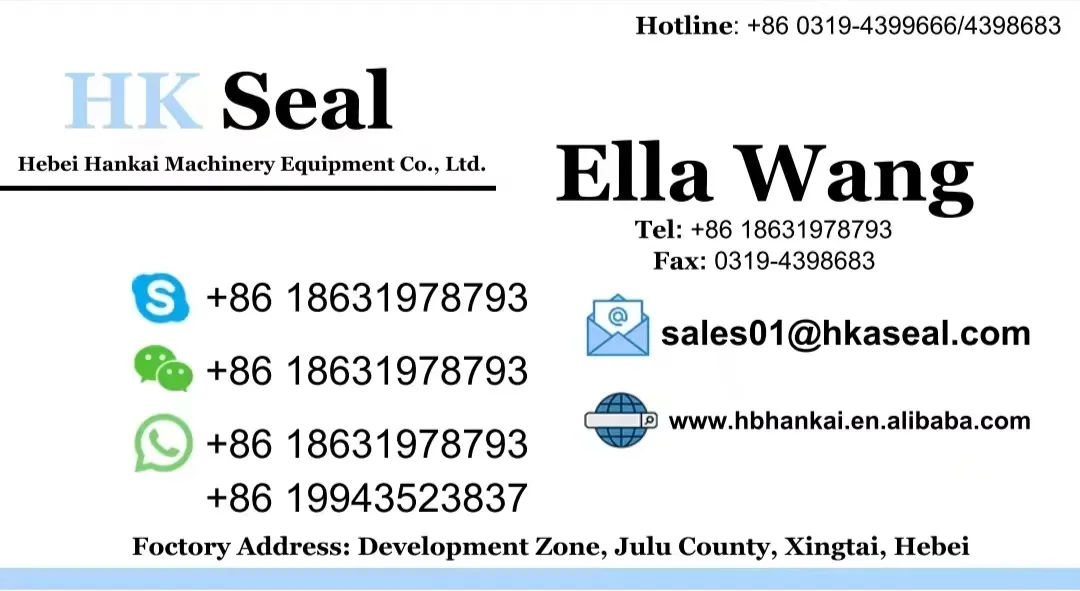ທ.ວ. . 03, 2024 16:00 Back to list
How to Change Wiper Seal on Hydraulic Cylinder for Optimal Performance
Replacing the Wiper Seal on a Hydraulic Cylinder A Step-by-Step Guide
Hydraulic cylinders are critical components in various machinery, from construction equipment to manufacturing systems. One common issue that can arise with hydraulic cylinders is the wear of the wiper seal. The wiper seal, often the first line of defense against dirt, dust, and other contaminants, plays a crucial role in maintaining the integrity of the hydraulic system. When it becomes damaged or worn out, it's essential to replace it promptly to ensure the efficient operation of the hydraulic system. This article provides a comprehensive guide on how to replace the wiper seal on a hydraulic cylinder.
Understanding the Wiper Seal's Role
Before diving into the replacement process, it’s important to understand the function of the wiper seal. The wiper seal helps to prevent external contaminants, such as dirt and debris, from entering the hydraulic cylinder, which can lead to accelerated wear and potential failure of the internal components. Over time, the constant exposure to hydraulic fluid and environmental elements can cause the wiper seal to deteriorate. Regular inspection and timely replacement can prolong the life of the hydraulic cylinder and maintain optimal performance.
Tools and Materials Needed
Before starting the replacement process, gather the following tools and materials - Replacement wiper seal (ensure it matches the specifications of your hydraulic cylinder) - Hydraulic fluid - Cleaning solvent - Wrenches and socket set - Screwdrivers - Pliers - Seal installation tool (if available) - Safety goggles and gloves
Step-by-Step Replacement Process
1. Safety First Begin by ensuring the hydraulic system is powered down, and relieve any pressure in the cylinder. Wear safety goggles and gloves to protect yourself during the process.
2. Remove the Cylinder Depending on the type of machinery, you may need to detach the hydraulic cylinder from the equipment. Use the appropriate wrenches to remove bolts and fittings. Support the cylinder securely on a workbench.
replacing wiper seal on hydraulic cylinder

3. Clean the Cylinder Thoroughly clean the exterior of the cylinder with a cleaning solvent to remove dirt and grime. Pay special attention to the area around the wiper seal, as contaminants can lead to further issues.
4. Remove the Old Wiper Seal Carefully pry out the old wiper seal using a flat-head screwdriver or a similar tool. Be cautious not to scratch the cylinder's surface, as this could lead to leaks with the new seal.
5. Inspect the Cylinder Once the old seal is removed, inspect the cylinder for any signs of wear or damage. Check the rod and the inside of the cylinder for scratches or scoring. If significant damage is found, further repair may be necessary.
6. Install the New Wiper Seal Before installation, ensure the replacement wiper seal is clean and free of debris. Lubricate the new seal with a small amount of hydraulic fluid to facilitate easier installation. Carefully place the new seal into its groove, ensuring it is seated evenly around the circumference.
7. Reassemble the Cylinder Once the new wiper seal is in place, reassemble any components that were removed during disassembly. Make sure that all fittings and bolts are tightened according to the manufacturer’s specifications to prevent leaks.
8. Test the Hydraulic Cylinder Reinstall the cylinder back onto the machinery and fill it with the appropriate hydraulic fluid. Test the system to ensure it operates smoothly without any leaks.
Conclusion
Replacing the wiper seal on a hydraulic cylinder is a straightforward task that can significantly extend the life of the cylinder and maintain machinery efficiency. Regular maintenance and timely replacement of worn seals can prevent costly repairs and downtime. By following the steps outlined in this guide, you can ensure your hydraulic system runs smoothly and reliably. Always remember to consult your equipment's manual for specific instructions and recommendations. With the right tools and a bit of patience, you can tackle this maintenance task with confidence.
-
Unlocking the Potential of Hydraulic Systems with Essential Sealing Solutions
NewsAug.06,2025
-
Unleash the Power of Your Hydraulic Systems with Our Premium Seal Kits
NewsAug.06,2025
-
Specialized Hydraulic Seal Kits for Breakers, Pistons, and Presses
NewsAug.06,2025
-
Revitalize Hydraulic Systems with Premium Repair and Seal Kits
NewsAug.06,2025
-
Fortify Your Cylinders with Premium Sealing Solutions
NewsAug.06,2025
-
Elevate Hydraulic System Reliability with Specialized Seal Kits
NewsAug.06,2025
-
TCN Oil Seal Metal Ring Reinforcement for Heavy Machinery
NewsJul.25,2025
Products categories
















